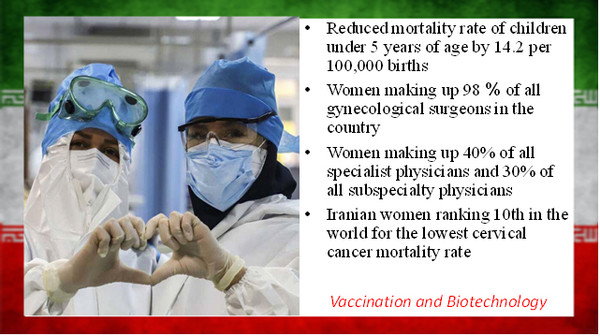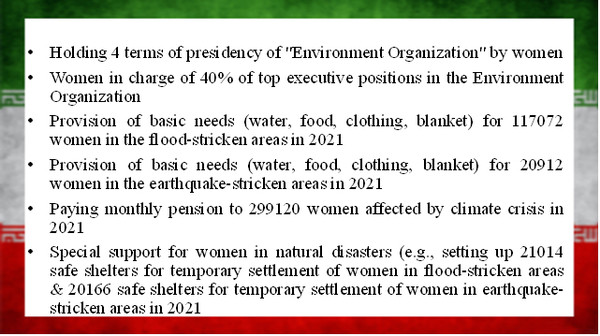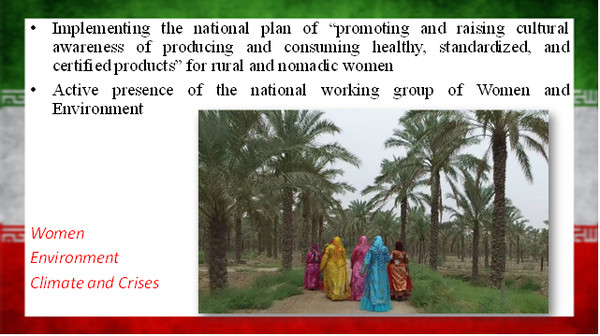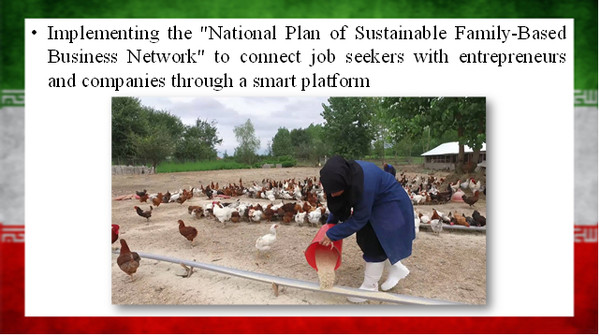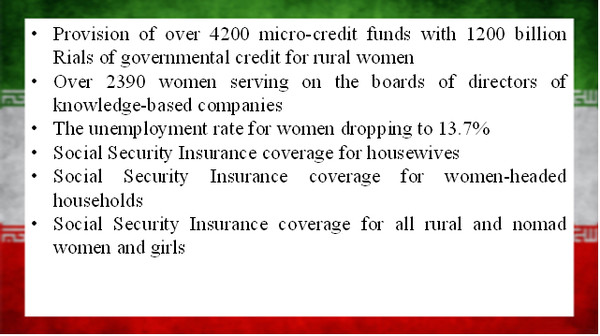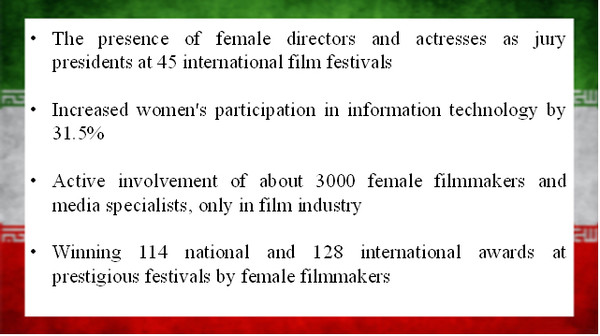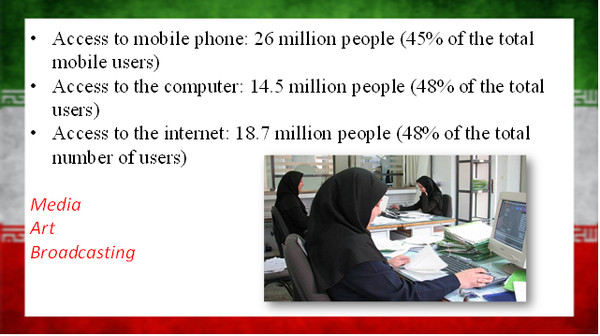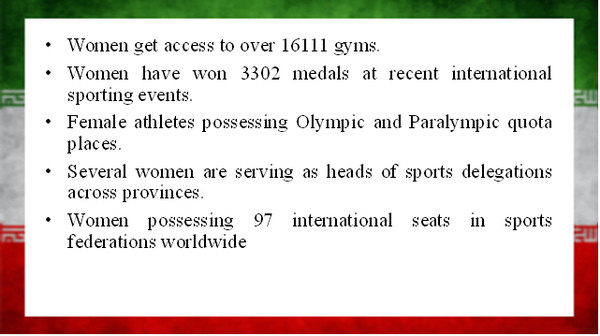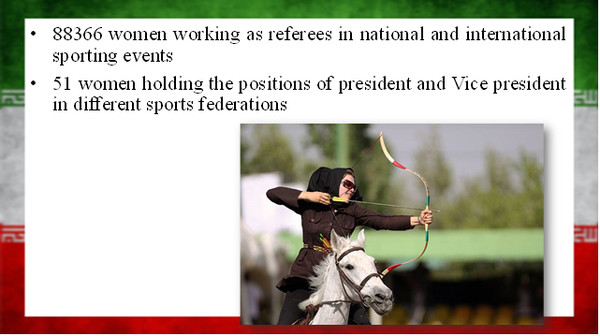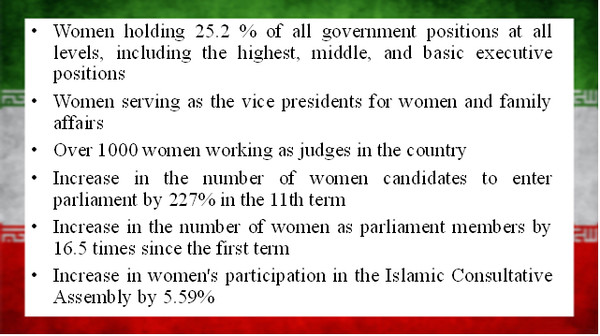Interview by the Seoul City Magazine, Feb 2024

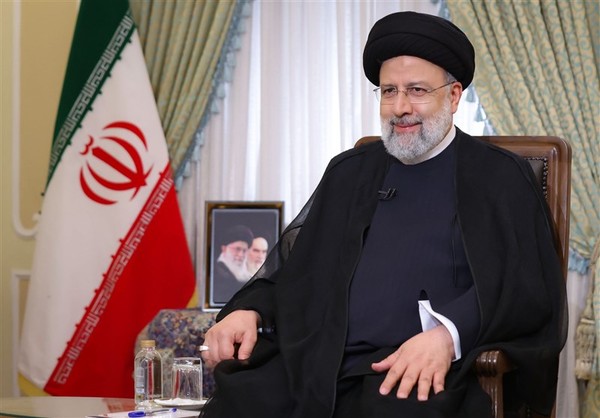
Q: Please introduce of the National Day of your esteemed country in February this year in full detail.
A: First of all, as Ambassador of the Islamic Republic of Iran to the Republic of Korea, it is my pleasure to take this opportunity for an interview by the Seoul City Magazine.
February 11th is the national day of the Islamic Republic of Iran. Forty-five years have passed since the victory of the Iranian Islamic Revolution, and during this period, the pace of scientific achievements in Iran has accelerated 11 times that of the world.
Unilateral and illegal US sanctions made us to achieve self-confidence and self-sufficiency in most fields. Today, we have progressed in almost all fields.
Relying on its indigenous talents and youths, the Islamic Republic of Iran has taken giant strides in developing new technologies in different fields such as Nano technologies, especially in Nano health products. Iran has so far domestically manufactured 35 Nano health products. Iranian knowledge-based companies have turned Iran into a regional forerunner in the field of stem cells and regenerative medicines. Iran also is one of 25 top countries in brain implants. Iran has made a huge leap forward in space science and technologies that domestically-manufactured rockets will carry two new Iranian satellites into orbit in March of this year. Our expertise in space research and technology is world-class, as our domestically produced rockets can carry satellites into orbit. Iran’s space industry is one of the top 10 countries in the world. So are stem cells. We have made good progress in the aviation industry and satellite manufacturing. In addition, Iran is also home to some 1 million tourist attractions from the ancient Persian and Zoroastrian civilizations. Located between the East and West, Iran was home to various cultural and commercial interactions that took place in our pre-modern history, which left indelible marks on our land. I recommend our Korean and international friends to visit Persepolis, Isfahan, Golestan Palace in Tehran, Dizin ski resort and Tabriz Grand Bazaar, among other places.

Q: What are Your Excellency's impression of President Yoon Suk-yeol and his new government? Please elaborate. Also, has there been a published expression of congratulations from the leadership of your country on the election and inauguration of President Yoon Suk-yeol? If yes, we would like to publish them.
A: The Islamic Republic of Iran and the Republic of Korea share a history that dates back to 1,000 years to the Silla Dynasty [57 B.C.-A.D. 935]” .
Iran and Korea established diplomatic relations in 1962.
Throughout all these years, the two countries have maintained strong and friendly relationship. The presence of Tehran Street in Gangnam district of Seoul, as well as Seoul Street in North of Tehran, are the symbol and remainder of that long friendship endured for more than half-century. During the last half-century, the two countries have forged a solid relationship and contributed to each other's economic development.
Unfortunately, after withdrawal of the former government of the United States from the international agreement that was endorsed by the Security Council resolution 2231 and illegal unilateral sanctions imposed by the U.S. against the Islamic Republic of Iran, the economic and commercial ties between Iran and South Korea were seriously affected.
The Islamic Republic of Iran and the Republic of Korea have maintained cordial relation beneficial for both nations, over the last few decades. Nonetheless, the bilateral relations have become stagnated due to some obstacles and measures, in recent years.
I believe that with the new of government in South Korea, a special opportunity is provided to return back to the past era for relations between the two countries. His Excellency Mr.Yoon Seok-yul, the President of the Republic of Korea has also mentioned Iran and energy in 110 key policies in the Middle East sector, which shows the keen attention of the new Korean government to Iran.
As you know, The Islamic Republic of Iran has played a key role in providing energy to the Republic of Korea and during last 4 years tried to keep the bilateral relations in good conditions.
It is my hope in the upcoming new era, under sagacity and leadership of His Excellency Mr.Yoon Seok-yul, the existing problems will be resolved and we witness entering of new period of prosperity in the overall bilateral relations between the two countries.

Q: What is the present volume of bilateral trade with Korea, its outlook in the next 12 months?
A: According to the last published official statistics the total trade volume between the Islamic Republic of Iran and the Republic of Korea, in 2021 amounted to $183 million, which is insignificant compared to the trade capacity of the two countries.
Trade turnover between the two countries in 2017 - 2018 stood on $12.3 billion, respectively. It might be interesting that at a historical stage of bilateral trade relations in 2012, both countries experienced a prominent volume of trade of $14.7 billion. South Korea became Iran's second largest trading partner after China at that time.
An important portion of this significant decline in Iran-South Korea trade relations is due to unfair and illegal unilateral U.S. sanctions against Iran followed by unlawful withdrawal of Trump administration from JCPOA.
As the Ambassador of the Islamic Republic of Iran engaging close ties with most main trade partners of both countries, would like mention that neither of them expected such a decline in bilateral trade in this new period of illegal sanctions. Unfortunately Korean companies mostly have lost for the past year and some of them have even gone bankrupt.
The total trade volume between the Iran and Korea, in Nov 2023 amounted to $187,029 million.
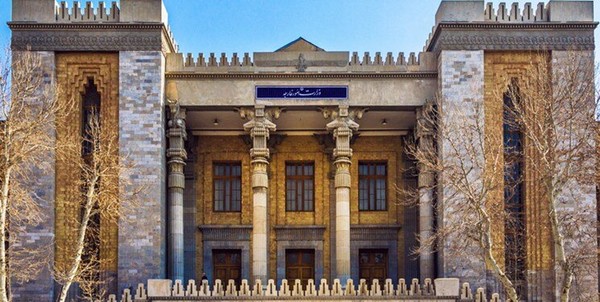
Q: What are the areas in your country where you want Korean companies to invest and what are the areas where you wish your businessmen to invest in Korea?
A: Iran is a vast country with an area of 1,648,000 square kilometers, rich in natural and human resources with population of about 82 million. Thirteen percent of the world's oil reserves and 18.2% of the world's proven natural gas reserves is located on Iranian territory. In other words, Iran is the second largest holder of hydrocarbons in the world.Iran has a unique geostrategic and geopolitical position in the West Asia region. An important part of the Persian Gulf, a vital energy corridor of the world, lays within the sovereignty of the Islamic Republic of Iran. Iran is on the route connecting East -West, North - South Asia and plays an important role as Asia's transit corridor to Europe in time and expenses reduction. For Korean companies, there are countless economic opportunities.
There are numerous investment opportunities laying in my country for Korean conglomerates. As a bridge located in four-way link between Asia, the Middle East and Europe, with vast and varied mineral resources alongside cheap energy opportunities enjoying young and active population of 25 million, more than half of whom are college-educated, Islamic Republic of Iran has given golden opportunities to international capital owners to invest in deferent fields.
Investing and joint venture in diverse sectors of the basic, upstream and downstream industries in the oil, gas and petrochemical sectors; participation in large infrastructure and development projects, such as road, rail, shipping, automotive, power, agriculture, fisheries, medicine and medical equipment; constructing and equipping hospitals and hitch industries are just some of the areas in which Korean companies can invest.In terms of tourism, according to the World Tourism Organization (UNWTO), Iran is in the top five in the world in terms of natural attractions and in the top 10 in terms of historical attractions in the world. Iran has a 7,000-year civilization history. Territorial diversity and the presence of the four seasons made it possible for foreign tourists to choose Iran as their destination. By the last illegal imposed sanctions the number of tourists who visited my country reached 5 million. According to the government's plan by 2025, the number of foreign tourists in Iran should reach 20 million. In this regard, I would like to declare that the Tourism Organization of our country is ready to cooperate with Korean companies in investing in this sector.
Another very favorable area for cooperation is the participation and investment of small and medium-sized enterprises (SMEs) in the field of knowledge-based technologies and start-ups. The Islamic Republic of Iran has made remarkable progress in recent years in the area of knowledge production and the development of the knowledge economy. The pace of Iran's progress in this area can be traced statistically to the growth of the number of Iranian-based knowledge companies from 52 in 2014 to more than 3,500 in 2018.
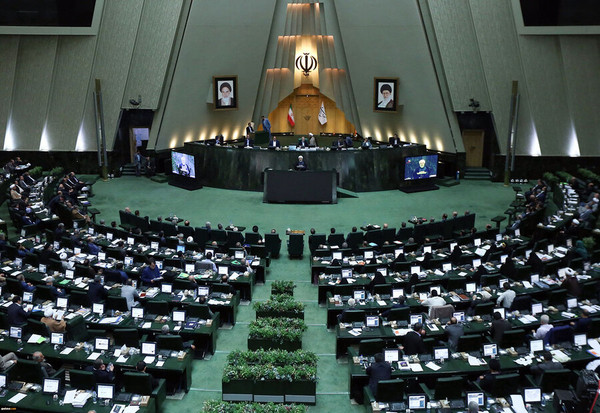
Q: Who are the major Korean companies actively engaged in bilateral economic cooperation between the two countries?
A: As mentioned, economic cooperation has an important role in bilateral relations. The Islamic Republic of Iran and The Republic of Korea also are not exceptional.
The Republic of Korea is one of the advanced economies in the Northeast Asia region which has had special role in Iran's economic development. The Islamic Republic of Iran has always embraced Korean companies and SMEs with open arms.
On the other hand, a significant necessity for rapid economic growth of the Republic of Korea has been achieved through Iran’s energy resources such as crude oil and natural gas and condensates. There has also been a strong economic bond between the public and private sectors of two countries. I would like to reiterate that in recent years, large Korean companies have been able to gain a good and even competitive position in the 80 million Iranian market which could be extended to 800 million market if the central Asian and Middle East countries included.

Q: Korean people, especially the up-and-coming Korean businessmen need rest and recuperation. What are your tourist attractions?
A: Iran or Persia is long known as one of the oldest and pre-historic lands in the world. Geographically it is located in a region known as the Cradle of Civilization, the Middle East. Given Iran has been situated in the juncture of the West and the East, and along the pathway of peoples of different tribes and nations, there still remain footprints of different cultures and civilizations who once plied across this vast land of the Zoroaster.
The tourist attractions in Iran are undoubtedly among the most attractive in the world. Iran has diverse cultures and civilizations which have grown and evolved within Iran throughout the long history. Due to its historical background and sustainable social and Cultural Revolution, Iran has a lot of interesting sights that satisfy tourists with different tastes. Iran is a land of four seasons due to its special geographical location. Four seasons in the sense that at any time of the year you can travel to one of the cities of Iran to witness a different climate. In winter, there are cities in Iran that have a summer climate. In winter, you can enjoy winter games at Dizin Ski Resort, the largest ski resort in the Middle East, and at the same time witness the spring weather on Kish Island, which is why it is a beautiful and spectacular destination for tourists. According to the Ministry of Tourism of the Islamic Republic of Iran, more than 8 million foreign tourists visited Iran in 2019. Iran is one of the top 5 countries in the world in terms of climate and biodiversity and is among the top 10 countries in the world in terms of history and culture. Historical monuments, which belong to the different periods of human settlement in the plateau of Iran, along with diverse natural, coastal, mountainous, and nomadic landscapes, make a coordinated and attractive combination for every tourist. The existing historical monuments in Shiraz, Isfahan, Hamadan, Kerman, Mashhad, Tabriz, Yazd, Tehran and many other cities are incentives enough for visiting this country.
Every traveler who travels to Iran with any motivation can find the desired sights in Iran according to their goals, tastes, and plans. Iran is an attractive, safe, cheap, and convenient country for tourists. Now there are one million historical and tourist sites in Iran. Here are some of the famous tourist attractions in Iran I introduce.
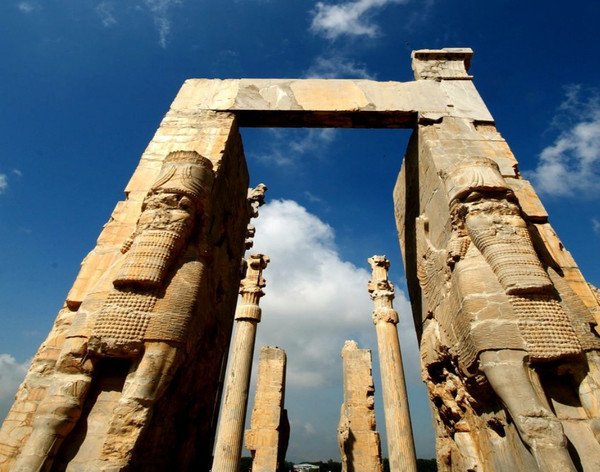
The Persepolis
Founded by Darius 1 in 518 B.C, the Persepolis was the capital of the Achaemenid Empire. It was built on an immense half-artificial, half natural terrace, where the king of kings created an impressive palace complex inspired by Mesopotamian models. The importance and quality of the monumental ruins make it a unique archaeological Site.

Meidane Emam, (Imam Square) Isfahan
It is easy to spend an entire day meandering in Meidane Emam, alternating between marveling at jaw-dropping architecture and haggling with business-savvy bazaar keepers. It is no wonder that the city of Isfahan is known as nesfejahan (half the world). One of the first sites in Iran to be registered with UNESCO in 1979, this square was built by Shah Abbas in the 17th century. One major monument stands on each side of this grand square, and they are all connected by two-story arcades. Imam Mosque has the largest dome in the city, while Sheikh Lotfollah Mosque dazzles visitors with its splendid tile work. Ali Qapu Palace is most notable for its music room, mosaic stairs, and views of the square, and the gate of the Imperial Bazaar will take you through one of the oldest bazaars in the region. At the end of the day, you will truly feel as though you have seen half of the world.
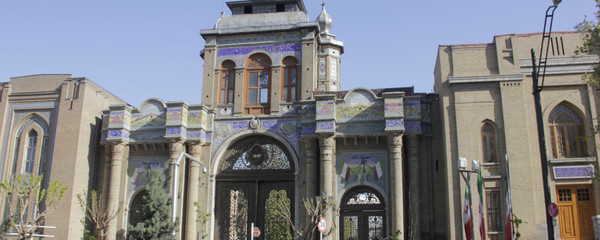
The Gate of National Garden
This magnificent brick gate, decorated with colorful tiles and multiple inscriptions is one of old symbols of Tehran built based on direct order of Reza Shah by Jafar Khan Kashani and Germans cooperation in a mixture of Iranian–European architectural styles especially of tile works and KolahFarangi in Qajar era between 1301 to 1304 SH.
The building was built as a gateway to the Mashq square that was a military area belonged to the armies therefore it has been named as "Mashq Square Gate".
Shortly after building the gate, the first public garden entitled "National Garden" was founded in the lands of Mashq square and so it has been renamed to "The Gate of National Garden".
In the upper part of the building, monitoring station, timpanist and the armed forces passage have been designed. The Gate of National Garden has a gateway for car pass and two for pedestrians. Today, there are several buildings, including the Ministry of Foreign Affairs (in the east side), the National Library and National Museum of Iran and the Post office on the west side of this area.
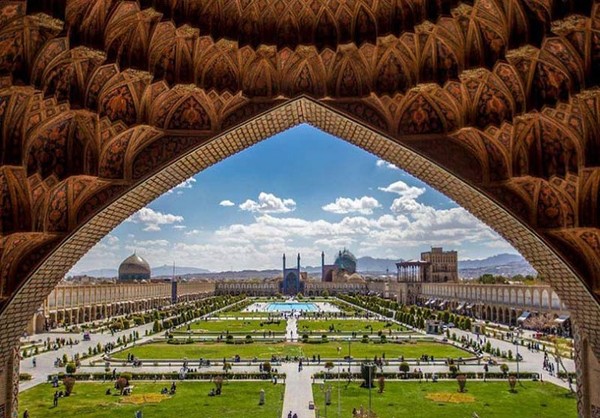
Median-e Naqsh-e Jahan
Built by Shah Abbas I the Great at the beginning of the 17th century, and bordered on all sides by monumental buildings linked by a series of two-storied arcades, the site is known for the Royal Mosque, the Mosque of Sheykh Lotfollah, the magnificent Portico of Qaysariyyeh and the 15th century Timurid palace. They are an impressive testimony to the level of society and cultural life in Persia during the Safavid era.Bam and its Cultural Landscape
Bam is situated in a desert environment on the southern edge of the Iranian high plateau. The origins of Bam can be traced back to the Achaemenid period (6th to 4th Century BC). Its heyday was from the 7th to 11th centuries, being at the crossroads of important trade routes and known for the production of silk and cotton garments. The existence of life in the oasis was based on the underground irrigation canals, the qanats of which Bam has preserved some of the earliest evidence in Iran. Arg-e Bam is the most representative examples of a fortified medieval town built in vernacular technique using mud layers.
PasargadaeParsargade was the first dynastic capital of the Achaemenid Empire, founded by Cyrus II the Great, in Pars, homeland of the Persians, in the 6th century BC. Its palaces gardens and mausoleum of Cyrus are outstanding examples of the first phase of royal Achaemenid art and architecture and exceptional testimonies of Persian civilization. Particularly, noteworthy vestiges in the 160-ha site include; the Mausoleum of Cyrus II; Tall-e Takh, a fortified terrace; and a royal ensemble of gatehouse, audience hall, residential palace and gardens. Pasargadae was the capital of the first great multicultural empire in Western Asia. Spanning the Eastern Mediterranean and Egypt to the Hindus River, it is considered to be the first empire that respected the cultural diversity of its different peoples. This was reflected in Achaemenid architecture, a synthetic representation of different cultures.
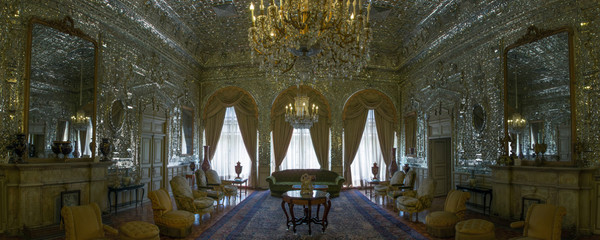
Golestan Palace
One of the oldest historic monuments in the city of Tehran, and of world heritage status belongs to a group of royal buildings that were once enclosed within the mud-thatched walls of Tehran's arg (citadel). It consists of gardens, royal buildings, and collections of Iranian crafts and European presents from the 18th and 19th centuries. Golestan Palace was constructed in the year 1268 AH. undefined under the order of Naseredin Shah. undefined This palace is comprised of the entrance along with various pavilions, such as mirror, diamonds, ivory and crystal pavilions as well as Salam pavilion in which the famous 'Takht-e-Tavoos' or 'the Peacock Throne' that Nader Shah took as ransom from India in his conquest in 1739, is placed.
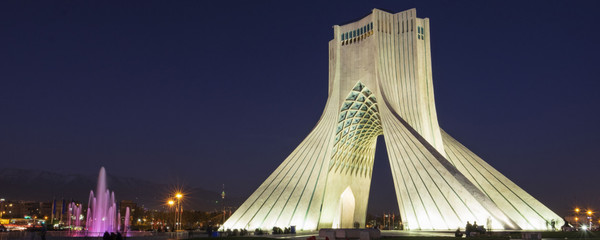
AzadiTower
Azadi tower on the campus of Azadi square with HosseinAmanat design and implementation has been built during the Pahlavi era (1349 Hijri). The Human Right charter of Cyrus the Great (The first written human rights of Cyrus the Great, the Achaemenid king) was unveiled in this location for the first time.
The gate-like architecture of this building is retrieved from the architecture of the Achaemenid, Sassanid and Islamic periods that is a combination of two pairs of intersecting arches on foundations with the height of 45 meters, in four floors including a body of white stones which has been divided with slits in blue turquoise; it was built as a symbol of the continuity of culture, art and civilization of Iran and asample of urban and modern symbols and signs. The building has four elevators, two staircases and 286 stairs. There are several theaters, galleries, libraries and museums in the underground campus of Azadi tower.
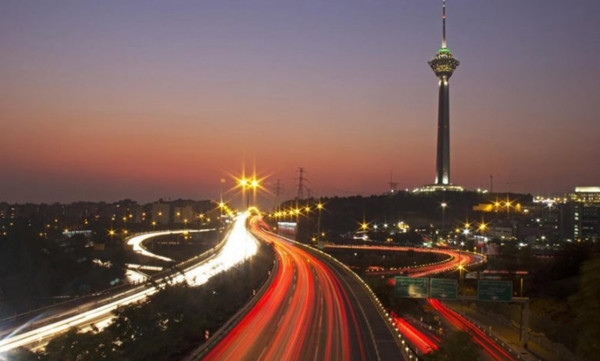
MiladTower
MiladTower, a great complex including various parts of technical and cultural varied structures is one of the unmatched tourism centers in Iran. This tower in 12 floors and as the highest telecommunication tower in Iran is visible from every district of Tehran. The construction of this tower lasted 11 years and finished in 1387 SH and has been known as the symbol of Tehran. Iranian–Islamic architecture of this tower and its octagonal structure are the interesting and sensible points of this tower architecture.
Milad Tower usages include facilitating the wireless communication in Tehran, optimizing the radio and television coverage, digital TV infrastructure, meteorology, traffic control and tourism. Milad tower has been constituted of different parts as follows: tower’s lobby (the entrance and trade center of tower), body and the vertex of structure (the 6th tallest telecommunication tower of the world), Municipality Museum (donative from Tehran municipality to Milad Tower), tower’s cafeteria (the cafeteria of the tower’s vertex), celebrities museum (the historical figures statues), revolving restaurant (the largest revolving restaurant of the world), an overlooking terrace (a terrace with the landscape of Tehran city), special restaurant (a restaurant over Tehran city), sky dome (a glass dome at the top of city), exhibition site and the antenna on the top of tower vertex (Milad tower’s telecommunication antenna).Tower’s side facilities are including dolphinarium, paintball club, laserium, shopping center, cycling road, waterfall, caravanserai and etc.
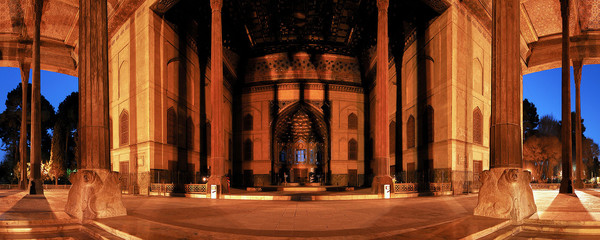
ChehelSotoun
ChehelSotoun (literally translated: Forty Columns) is a palace in the middle of 67000 square-meter garden of Jahan-Nama at the far end of a long pool, in Isfahan. The palace was built by the order of by Shah Abbas II as his leisure the palace was specially used for tor receive high ranking guests like Iranian and foreign politicians.
You can see 20 beautiful slender columns plus 20 columns reflected in the water of the fountain in the middle of a well maintained garden which is registered as one of the World Heritage Persian Gardens. The elegant palace of the 40 columns has superb fresco's and mural paintings on ceramic.
The palace opens to an elegant terrace with the spectacular view of the fountain and garden. If the pool is full of water, you can see 20 reflected columns in the fountain. There are four stone lions at every corners of the central fountain, the hall and marble and vaulted cornices around it.
Portrait of the sovereign in the royal hall, the Mirror Hall, the portrait of Shah Abbas I wearing his royal crown and the miniatures of the treasury room are the must sees of the palace.
The building used to be a royal pavilion for kings’ receptions and balls. An inscription on the structure shows the decoration and frescoes were finished in 1647. Two large historical frescoes date back to late Zand dynasty. The building is now used as the museum Persian painting and ceramics.
It makes it even more interesting to visit ChehelSotun if you know the palace had been severely damaged since it was built. At the time of Afghans’ occupation of the town, the interior of the the mural paintings and walls of the palace were covered with a thick coat of whitewash.
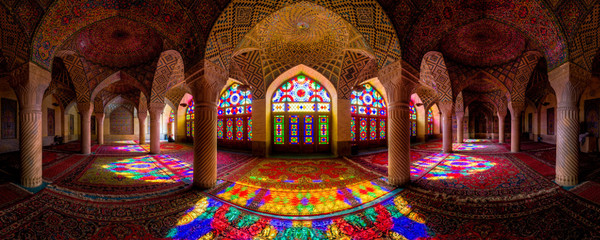
Nasir al-Mulk Mosque
Nasir al-Mulk Mosque is one of the oldest mosques in the Goud-e-Araban district close to the famous Shah Cheragh Mosque in Shiraz. MirzaHasan Ali, also known as Nasir-al-Mulk , was one of the Qajar dynasty's grandee who ordered the construction of this building.
Mohammad Hassan Memar was the architect of the 2212 square meter mosque. The construction and building of the infrastructure of the mosque lasted about 12 years (1914 to 1926).
The mosque has a large courtyard, one main entrance to the mosque, yard, porch, arches, the decorated finials and tiling, masonry, brickwork and stained glass works. The beautiful design is significantly known among mosques in Iran.
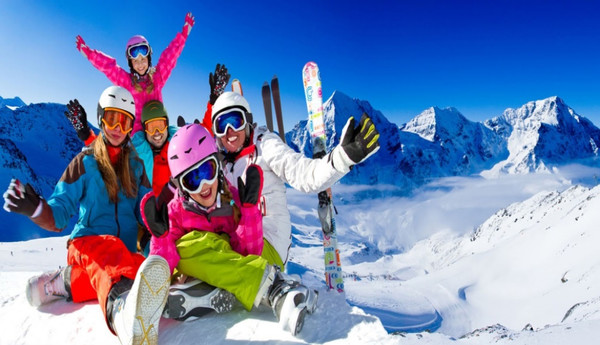
Ski resort of Dizin
Dizin is the largest Iranian ski resort located in the Alborz mountain ranges 70 km North of Tehran. Dizin is the first ski and winter sport resort in Iran that has been officially recognized and granted the title by the International Ski Federation for its capability in administrating official and international competitions.
The ski season in Dizin lasts from December to May, due its high altitude. The highest ski lift reaches 3,600 m (11,800 ft), making it one of the 40 highest ski resorts in the world.

Tabriz Historical Bazar Complex
Tabriz has always been an important commercial center due to its strategic location along the Silk Road. The Bazaar, added to the UNESCO inventory in 2010, is one of the oldest bazaars in the Middle East. An interconnected series of red brick buildings, each part of this complex sells a different product such as gold and jewelry, shoes, or various household items. Perhaps the most notable section, however, is the rug bazaar where those in the business can be seen selling dyed thread, sewing up loose rug ends, and transporting stacks of rugs.
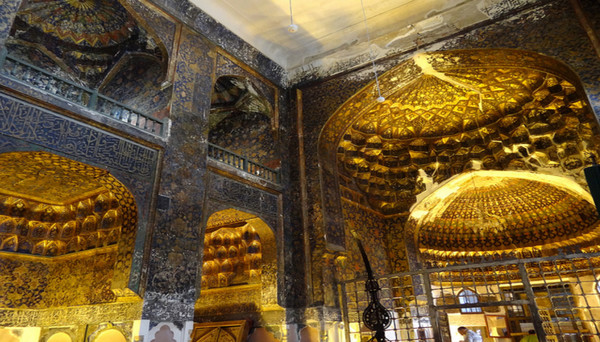
Sheikh Safi al-din Khanegah and Shrine Ensemble in Ardabil
This shrine ensemble located in the northwestern city of Ardabil joined UNESCO in 2010. It is the location of the tomb of Sheikh Safi al-din, a leader of Islamic Sufi mysticism. Constructed between the 16th and 18th centuries, it is a fusion of Sufi tradition and Iranian traditional construction. The route to the shrine consists of seven segments representing the seven stages of Sufi mysticism, and other parts are divided into eight gates, which mirror the eight attitudes. The areas of this shrine have served various purposes over the years including a library, mosque, school, mausolea, and cistern, among others.
Please find the attachment for the pictures.

Q: What are the most important festive days in your country? Please elaborate.
A: Iran is a beautiful country with a unique ancient civilization and culture that has its own beautiful customs. Customs that have been passed down from generation to generation and have created feasts and celebrations. There are many religious and cultural ceremonies and celebrations in Iran that are held annually. Behind all the celebrations that take place in Iran, there are philosophies and beliefs, and the manner of holding each one is special and unique. One of the most important festivals in Iran is Nowruz (which was registered as an intangible cultural heritage in UNESCO in 2009), Yalda night, ChaharshanbehSoori, SizdehBadr, This is while each of the provinces of Iran has its own celebrations and rituals.
The most important festival day in my country is Nowruz. Nowruz is a spring cultural festival which is tied to the natural environment and the actual astronomical event. The terms of Nowruz is composed of two Persian words “Now” (new) and “ruz” (day).It is originated from Iran over 3000 years ago which is celebrated in all central Asian nations like Turkmenistan, Kazakhstan, Tajikistan, Uzbekistan, Afghanistan and the Republic of Azerbaijan.Nowruz means new life for natural mankind, spiritually and physically for Iranian. We are very happy and try to make all happy in Nowruz holiday through our traditional costumes.)
Dear readers of Seoul City Magazine, for getting acquainted with Iran, Iranian culture and festivals, can refer to the Embassy's website at the following address: https://southkorea.mfa.gov.iran
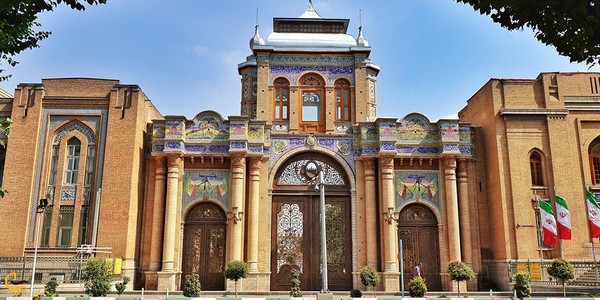
Q: Your Excellency as the Ambassador of your esteemed country perform the important role of a bridge between the two countries. And the government, business and various other circles in Korea wish to learn more about Your Excellency. Please introduce yourself in detail, including your career, family and hobbies.
A: First of all, I would like to express my pleasure for the opportunity to interview with the Korea Post. I wish it could have made earlier and appreciate for arranging this interview.
I started my mission in South Korea as the Ambassador of Islamic Republic of Iran from October 2018. On 1988 as the Expert, Persian Gulf Affairs Division I, I started my career in ministry of foreign affairs of the Islamic Republic of Iran as the political expert. Then from 1997 focusing on Eastern and Northeastern Asian countries, I have been involved in all aspects of bilateral relations at various missions mainly in China (two terms 1997-2001 & 2007-2010) in this region. I have also been to Saudi Arabia for my first mission from 1991 to 1994. I am married and have three daughters who are studying in Iran.

Q: Who are the Koreans who most prominently contribute to the promotion of relations, cooperation and friendship between the two countries?
A: Members of the Korea-Iran Council, representatives of the Ministry of Foreign Affairs and other government institutions and private companies are among the the Koreans who most prominently contribute to the promotion of relations, cooperation and friendship between the two countries.
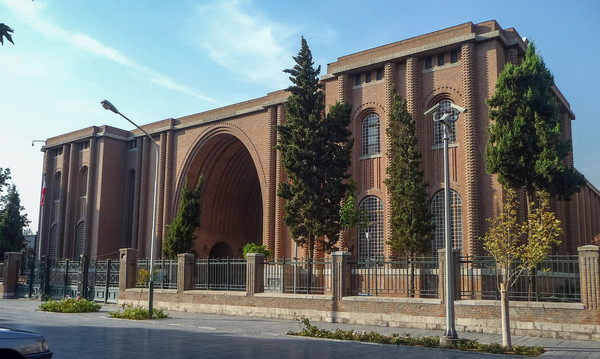
Q: Please add whatever other details that Your Excellency might consider to be important.
A: Relations between the people of Iran and Korea have an ancient history. This background can be traced back to the position of the Silla Empire in Persian Kushnameh.
At the present time, the naming of two beautiful and important streets of Tehran and Seoul in the capitals of the two countries expresses the interest and connection of the hearts of the people of Iran and Korea to each other.
Iran has always strived to play a constructive role in the context of mutual respect and peaceful coexistence with South Korea’s friendly country, taking into account its position.
The Islamic Republic of Iran has always been one of the most stable and reliable sources of energy. In other words, the engine of South Korea’s economy and witnessed the continued supply of oil to the country during the oil crisis of the 1970s.
As the United States withdrew from its nuclear deal with the five Security Council members and Germany (P5+1), the Joint Comprehensive Plan of Action (JCPOA) and violated UN resolution 2231, in May 2018 and started a new round of unilateral and illegal economic sanctions against Iran, it seems that South Korea is committed itself to fully adhering to U.S. guidelines. The adoption of this policy by Koreans has significantly reduced trade cooperation with the Islamic Republic of Iran and put negative effect to these historical relations.
Anyway, as the ambassador of the Islamic Republic of Iran, it is my duty to convey to our Korean friends the message of friendship between the Iranian government and the nation.
The Iranian market is still ready to accept the capital of Korean companies and their products. Time is limited and our Korean friends are losing their further opportunities in Iran. I’m sure if the Korean companies would reconsider their approaches to working with Iran, the Iranian counterparts would welcome them.
In the end, we draw your attention to Actions and Prominent Achievemens on the Advancemet of Women and Family status in the Islamic Republic of Iran:


